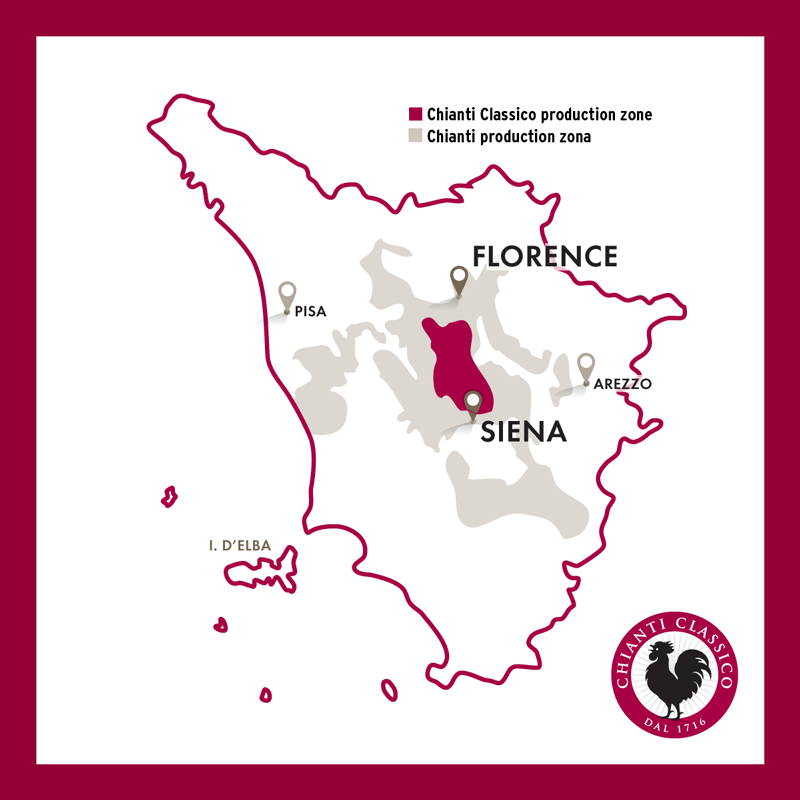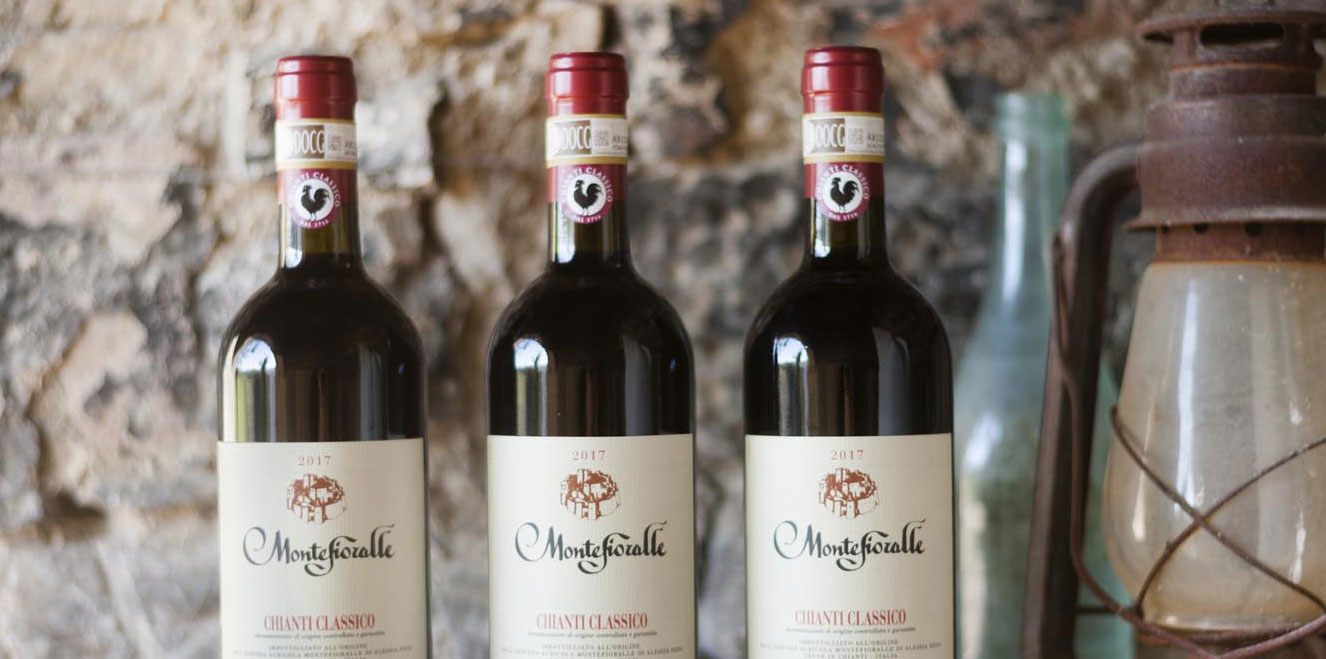There are many articles out there that talk about the differences between Chianti and Chianti Classico (Gallo Nero) wines, so why are we writing another one on our blog?
Above all, because I realize that many of my friends that live in Florence are still not clear on what the disparity is; so, I said to myself - imagine the confusion of our clients spread out all over the world.
In addition, many other articles and discussions focus on the differences in regulations and not as much on the geographical aspect and the terroir.
Chianti DOCG and Chianti Classico DOCG: two different appellations for two separate geographical areas
Let’s start with a very important factor; Chianti Classico is NOT a sub-zone to the “Chianti” DOCG but an independent appellation that is identifiable by the Black Rooster (Gallo Nero) logo.
Chianti Classico DOCG is produced in the Chianti district, an area that is especially suited for vine growing and wine production in the heart of Tuscany, between Florence and Siena.
With few exceptions, Chianti DOCG is an inexpensive wine that is produced in the rest of Tuscany, outside the historical area.

The geographical area called “Chianti”
In 1716, Cosimo III, the Grand Duke of Tuscany, defined the geographical boundaries according to the territorial law most suited for grape wine production in the region. Among these areas, the Chianti territory was clearly identified. It is a region well known for centuries for quality wine production that comprises about 70000 hectares and stretches out between Florence and Siena without including the two towns and their confines.
The quality of the wine produced in this area was, however, also its damnation. In the early 20th century, in the absence of specific laws for the protection of the appellation, there were those who started to produce Chianti all over Tuscany, not just within the geographical borders of this area.
Thereafter, an attempt was made to clarify the situation by defining the wine produced within the original production area as “Chianti Classico”; however, allowing the wine produced outside the classical area to maintain the name “Chianti” only kept the confusion alive among the consumers.
Why do we want to underline the difference between Chianti and Chianti Classico?
As I often tell our clients, Sangiovese is a grape variety that is particularly sensitive and greatly reflects the character of the territory. It is highly conditioned by the soil, the climate, and the environment.
Therefore, it is easy to imagine how the result can be considerably different between a “Chianti Classico” wine produced with Sangiovese cultivated in the heart of our region and a “Chianti” wine that can be produced practically all the way to the Tuscan coast.
We could also discuss the regulatory differentiation between Chianti DOCG and Chianti Classico DOCG wines where the rules are stricter and oriented towards a qualitative production when it comes to the Black Rooster wines (lower yield per hectare, a longer minimum period of aging, etc.). That would be a further way to highlight the real and substantial difference between the two appellations: the territory where the grapes are produced.
Wouldn’t it be possible to clarify it once and for all?
It is obvious that for years Chianti DOCG exploited the reputation of the wines produced under the Chianti Classico name and, thus, the Chianti Classico wines have unfortunately often been identified as cheap wines of medium to low quality similarly to most of the Chianti DOCG wines.
The easiest solution would be for the wineries belonging to the Chianti DOCG consortium to voluntarily abandon the name, perhaps seeking new classifications that would, consequently, offer consumers better clarity (new appellations could be created such as Firenze DOC, Siena DOC, Arezzo DOC, etc.). In that way, they could embark on a new journey of valorization of the territory without following in the wake of an appellation so very different as is the case with the Chianti Classico.
Who knows if this type of agreement cannot be entered into in the future?
Three takeaways
- Chianti and Chianti Classico are two profoundly different appellations
- Chianti Classico is produced within the historical Chianti district, while Chianti wine is produced outside the historical area.
- The best method to distinguish a Chianti Classico wine from a Chianti wine is the Black Rooster emblem present on the neck of the bottle or on the label.





